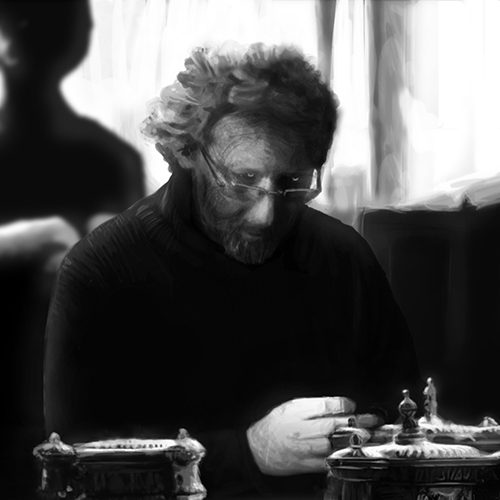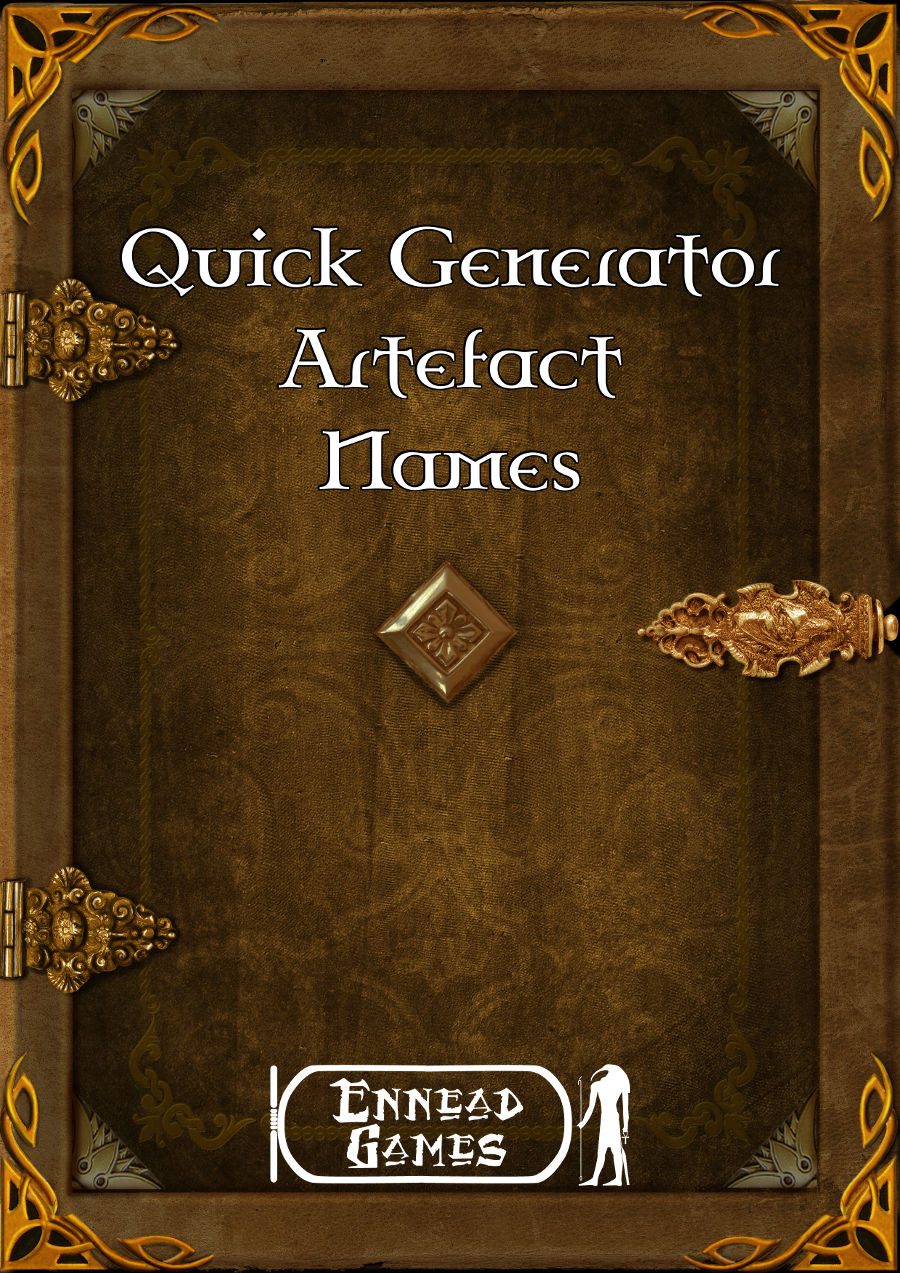
Mapping a Story: The Five Scene Plot
Phil Nicholls blogs at Tales of a GM, where he writes about narrative gaming, faster prep and more story. He is currently running a HeroQuest Glorantha campaign in a home-brew setting. Phil has written for Johnn Four’s Roleplaying Tips newsletter and has a selection of self-published pdfs.
This essay is taken from the archives at Tales of a GM.
My favourite method for structuring an RPG plot is the Five Room Dungeon (5RD). This brilliant tool came from Johnn Four’s Roleplaying Tips newsletter #156. As with so many great ideas, the 5RD can be repurposed for a broader role.
Familiar Structure to Stories
I play a more narrative game, so I broadened the scope of the 5RD to apply it to story structure in general. Thus was born the Five Scene Plot (5SP).
Basic story theory describes the arc of a story rising from the beginning towards a conclusion. This is rarely a straight line, as there will be small peaks and troughs along the way. The eventual climax to the story is often followed by a short aftermath or denouement.
This simplistic analysis of story structure can easily be imported into the 5SP format. The 5SP is broken down into the following scenes:
- Entrance
- Puzzle/RP
- Setback
- Climax
- Reward
Let me explore each one in turn.
Entrance
Every plot starts at the beginning. Even when the plot begins in media res, this is still the beginning of the story at the table. The entrance scene is not just the hook, although that is one part of what happens during this scene. Structurally, before this scene the Players know little about the story they are about to explore, and by the time this scene is over, they are heading onwards into the story.
Applying this structure to a television series, this is the opening scene, possibly even before the credits, which frames the challenge for the coming episode. A recent cycle of my Tales of the Hero Wars campaign was a police procedural game. Thus, an entrance scene could play out in an office at the station house where the Heroes are given their assignments. Or, a plot could start with the Heroes at a crime scene.
The classic RPG plot entrances are somewhat cliched these days: sitting in a tavern or approached by a Patron. It is important to engage the Players with the hook, to avoid any claim of railroading them through the plot. A good entrance scene propels the Heroes headlong into adventure, and this should be your primary goal when designing the scene. Make it fun, compelling and give the Heroes a strong motivation to pursue the plot.
Puzzle/RP
Next on the list is the puzzle or roleplaying scene. My 5SP sheet lists both options, but I generally choose one or the other. Structurally, however, they are very similar, as they both represent a more mental challenge for the Heroes. Not every problem can be solved by the sword. Indeed, some of the trickiest challenges presented to Players are the ones not solved by the application of violence. These are the challenges to really set the Players thinking.
The mental challenge could be a social encounter requiring the Heroes to interview one or more individuals. It could be a masqued ball or a battle of wits. Alternatively, this scene might be a more conventional puzzle, a challenge for the intellect. Traditional traps and riddles fit this category, as would any kind of intellectual duel. The solving of a mystery, which involves interviewing characters with relevant knowledge, is the perfect synthesis of these two aspects.
In terms of plot, this scene represents the rising action. The situation introduced by the entrance scene is developed and expanded. The Heroes are making forward progress. Doubtless they are learning more about the situation, and may grow complacent, believing they understand exactly what is happening. This is the time to introduce the Setback.
Setback
As the name for this scene indicates, the prevailing idea here is to place a temporary obstacle in front of the Heroes. This does not have to be an armed group bursting down the door, despite the perfect way this represents a setback.
Less violent setbacks include betrayal, an additional twist to a mystery, or the failure of whatever theory the Players currently hold. Something which the Players believed to be true, and were relying upon, is revealed to be false. The situation for the Heroes has worsened, and they need to take action to keep the plot moving forward.
Climax
Naturally, as they are Heroes, they will succeed and overcome the setback. This takes the plot to the climax.
In essence, this is the final scene in the plot, where the opposition set up in the entrance is overcome. Traditionally the climax is a direct confrontation with the primary villain. However, this need not always be a combat. A car chase, a dramatic courtroom scene or a tense negotiation can all serve as the climax for a plot.
The exact nature of the climax scene depends upon the type of story being told. So long as you create a climax to match the theme of the plot, then the Players will have fun.
Reward
Once the antagonist has been defeated, or possibly escaped to face the Heroes another day, then the reward scene wraps up the plot. Use this scene to tie up any loose ends, and reward the Heroes for their valour. Celebrate the success, and give the Players the chance to bask in the reflected glory of another victory. Seeds for another plot may be found here, but this scene is about bringing the current plot to an end.
Applying the Structure
Using the 5SP allows me to structure my campaign. Even the larger plots are envisioned within this format. However, for such long plots, it is best to nest one 5SP within another.
For example, the first plot in a campaign is usually an introduction to the setting and the themes of the campaign. This plot is very much the entrance to the campaign. So, while this initial plot will retain all of the features of a 5SP, it functions as an entrance to the whole campaign.
This nesting of Five Scene Plots allows me to explore larger plots in manageable chunks. The middle scenes of a long plot, the puzzle/RP and setback scenes may repeat to stretch out the longer plot, but the overall structure keeps me on track.
Varying the Structure
Indeed, it is the flexibility of this structure which adds to the appeal. On a basic level, I can juggle the sequence of scenes to keep Players guessing. I might start a plot with a conventional puzzle or mystery, then move onto a roleplaying scene before the normal setback. Or, I could lengthen a plot with additional middle scenes, before the Heroes eventually reach the climax.
Every time, I have an underlying plot structure to support the changes I make. Plus, the names of the scenes remind me of the overall narrative structure, which helps me create a strong plot.
Breaking the Railroad
One argument against this type of structure is how it railroads the Players. This is certainly not my experience at the table. The entrance is the closest to the railroad, as this is a scene I need to present, or at least some variation of it, to engage the Heroes with this plot.
Typically these entrance scenes arise from either a conceit of the setting, which the Players agreed to, or as a result of previous actions by the Heroes. While I usually have an idea how the Heroes might move on from the entrance, this is where the railroad stops.
Story is what emerges at the table, as a collaborative gaming experience. The plot is where I lay out a possible sequence of events, even a probable sequence, but as a guideline only. The 5SP is a structure for my improvisation at the table, and thereby helps to ensure I have some elements prepared for the Heroes to encounter. This is my contribution to the story, with the benefit of being prepared in advance.
Conclusion
The Five Scene Plot gives me a simple, yet flexible structure as the basis for my plots. I vary many of the details of a scene, and even extend a plot to more than five scenes if required. Yet, by sticking to a format which follows a traditional narrative sequence, I stay on course to deliver the story experience my Players expect. The 5SP is a valuable tool to use as the basis for the improvisation needed to keep up with what the Players want to explore.
How do you structure your plots? Do you consider classic narrative structure when designing plots? Share your thoughts with your fellow GMs in the comments below.
Happy Gaming
Phil
For more essays from Phil, and updates about his latest campaign, visit Tales of a GM.




2 thoughts on “[Tales of a GM] – Mapping a Story: The Five Scene Plot”
Comments are closed.